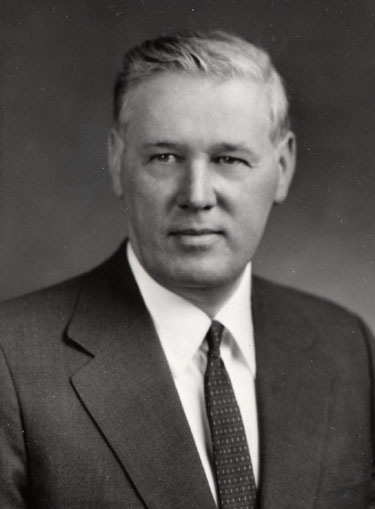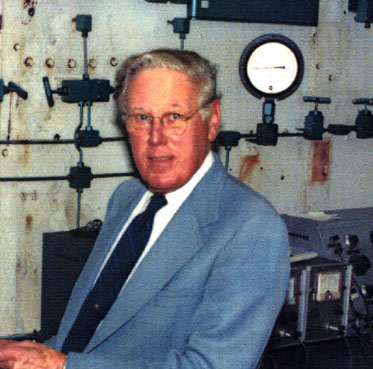
1921–2003
-
Geophysical Laboratory, staff member (1948-1971)
-
Geophysical Laboratory, director (1971-1986)
-
Geophysical Laboratory, emeritus director (1986-2003)
-
B.S., University of Chicago, 1941
-
Certificate of Professional Proficiency in Meteorology, University of Chicago, 1942
-
Ph.D. in Petrology, Massachusetts Institute of Technology, 1948
-
D.Sc., Unversity of Paris, 1981
-
D.Sc., Colorado School of Mines, 1995
-
National Academy of Sciences
-
Petrologists’ Club, Washington, D.C.
-
American Geophysical Union, president, fellow, council
-
Mineralogical Society of America, fellow, vice-president, president
-
History of Earth Sciences Society, president
-
Geological Society of America, fellow, council
-
Geochemical Society, founding member, council
-
Geological Society of London, honorary fellow
-
American Philosophical Society, council
-
American Academy of Arts and Sciences, fellow
-
Geological Society of South Africa, fellow
-
Washington Academy of Sciences
-
Mineralogical Society of America Award
-
Columbia University Bicentennial Medal
-
Arthur L. Day Medal (Geological Society of America)
-
Arthur L. Day Prize and Lectureship (National Academy of Sciences)
-
Wollaston Medal (Geological Society of London)
-
Roebling Medal (Mineralogical Society of America)
-
A. G. Werner Medal (German Mineralogical Society)
|
Hatten Schuyler Yoder, Jr. was perhaps one of the most loved and respected individuals to ever grace Carnegie’s Geophysical Laboratory. Yoder began his career in science as a meteorologist for the U.S. Navy during World War II in the Pacific and Europe. In 1945, he worked side by side with a team of Russian and American meteorologists in Siberia to establish weather monitoring stations before the planned Allied invasion of Japan. Understanding weather conditions was key at this point during the war, as all plans of attack depended heavily upon the weather. Yoder and his colleagues work gave the Allied forces the upper edge through reliable weather forecasting. |
|||
|
|
|||
|
|||
|
|
|||
|
Basalt was one of Yoder’s greatest interests. This common volcanic rock was the focus of years of study and dozens of papers. He worked closely with Cecil Tilley to quantify the classical metamorphic facies concept in terms of state variables, pressure, and temperature for basalt. Their studies proposed the idea of the basalt tetrahedron and master flow sheet for igneous rocks. His most famous work on this subject, Generation of Basaltic Magma, was published in 1976. The book firmly established him as a leading expert on the origin of basalt. Yoder’s interests were not limited to science. A true history buff, he wrote an autobiography about his war experiences entitled The Planned Invasion of Japan (1945): The Siberian Weather Advantage in 1997. He is also the author of Centennial History of the Carnegie Institution of Washington Volume III, a detailed history of the Geophysical Laboratory from its beginning to 2004 and "Timetable of Petrology," a thorough list of dates in petrology's history from antiquity to present. On a more personal note, Yoder was a man of honor and justice. He was an avid activist for women and minority’s rights, dictating that “right is right.” He campaigned in the 1960s to desegregate the “white only” restaurant in D.C.’s Willard Hotel. Yoder was a man of science, principles, and integrity, and displayed inspiring leadership both within and outside the Geophysical Laboratory. |
|||
|
|
|||
|
References:
Further Reading:
|
|||

